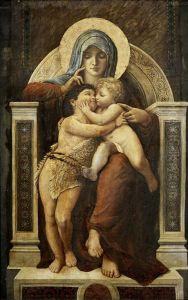William Bougureau Paintings
William-Adolphe Bouguereau was a French academic painter who was born on November 30, 1825, in La Rochelle, France. Bouguereau was celebrated for his traditionalist paintings, which emphasized expertly crafted renderings of mythological themes, the human figure, and a pursuit of idealized beauty. He was a staunch traditionalist whose realistic genre paintings and mythological themes were modern interpretations of classical subjects with a heavy emphasis on the female human body.
Bouguereau entered the École des Beaux-Arts in Paris in 1846 and studied under François-Edouard Picot. He was an exceptionally talented student, which earned him the Prix de Rome scholarship in 1850, allowing him to study at the prestigious Villa Medici in Rome for four years. His time in Italy had a profound influence on his aesthetic approach, and he was particularly inspired by the art of the Renaissance and the ancient Romans.
Upon his return to France, Bouguereau quickly gained popularity, and his works were sought after by wealthy art patrons. He was awarded numerous official honors, including the Grand Prix de Rome and medals from various exhibitions, such as the Salon, to which he was a regular contributor. Bouguereau was also a teacher at the Académie Julian, where he influenced a generation of painters. He became a member of the French Academy of Fine Arts and was knighted in the Legion of Honour.
Despite his success, Bouguereau's style fell out of favor with the advent of the modernist movements such as Impressionism, which rejected the formalism and emphasis on technique that characterized academic art. After his death in La Rochelle on August 19, 1905, his reputation waned, and he was largely forgotten by the art world until the late 20th century, when there was a renewed interest in academic painting, and his works began to be reevaluated and appreciated once again for their beauty and technical proficiency.
